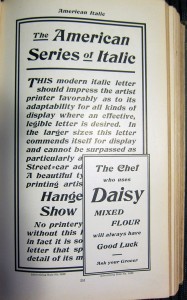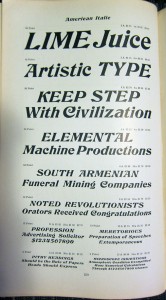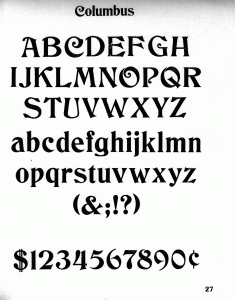

As mentioned previously, I’m working on a revival of the Hermann Ihlenburg typeface Columbus (1892, MacKellar, Smiths & Jordan / American Type Founders), under the name Cristoforo. But now I’m looking for samples of its differently-named italic companion, American Italic (Hermann Ihlenburg, American Type Founders, 1902). I have two from the ATF 1906 specimen book, shown at right. But neither shows a complete character set at a reasonable size. If anyone has the actual metal typeface, especially in a medium to large size, I would love to get a full specimen. Or, if you have a printed sample showing all or most characters at a largish size, that would also be great!
[Update April 21/22: Just got some great pics from Jackson Cavanaugh (Okay Type), showing the relevant pages from the ATF 1899, 1900, and 1903 specimen books! Amelia Hugill-Fontanel at the Cary Library is also digging into it. I am still thinking about scans, but the pics are a fab start. I am already in good shape for Columbus Initials, the swash caps font. I’d love to hear from anybody who has metal type for any of these faces!]

I’m already in decent shape for a sample of the upright version of Columbus, unless it turns out the full typeface has more characters?
Click on any image for a larger version.
Watch this space for news on the related Kickstarter campaign coming in a few days! Get in touch if you would like a sneak preview. [UPDATE 23 April 2012: I am now funding development of this typeface on Kickstarter! Deadline is May 19.]
Leave a Reply